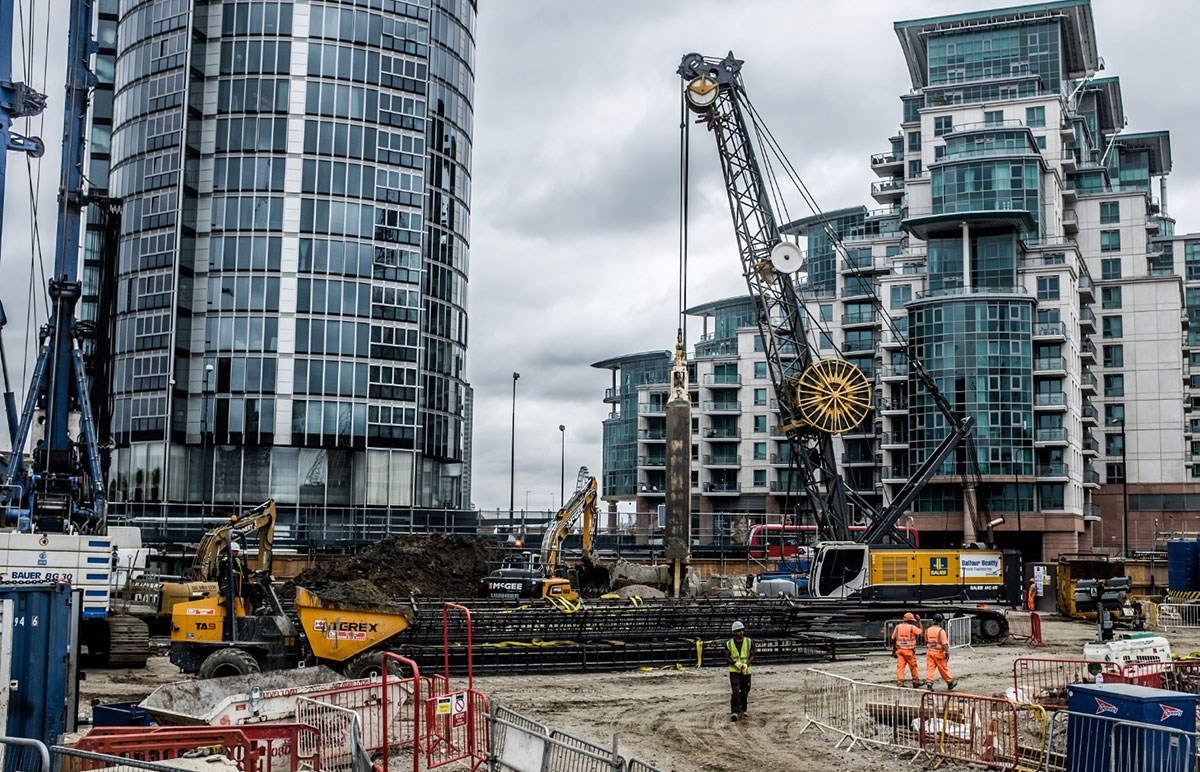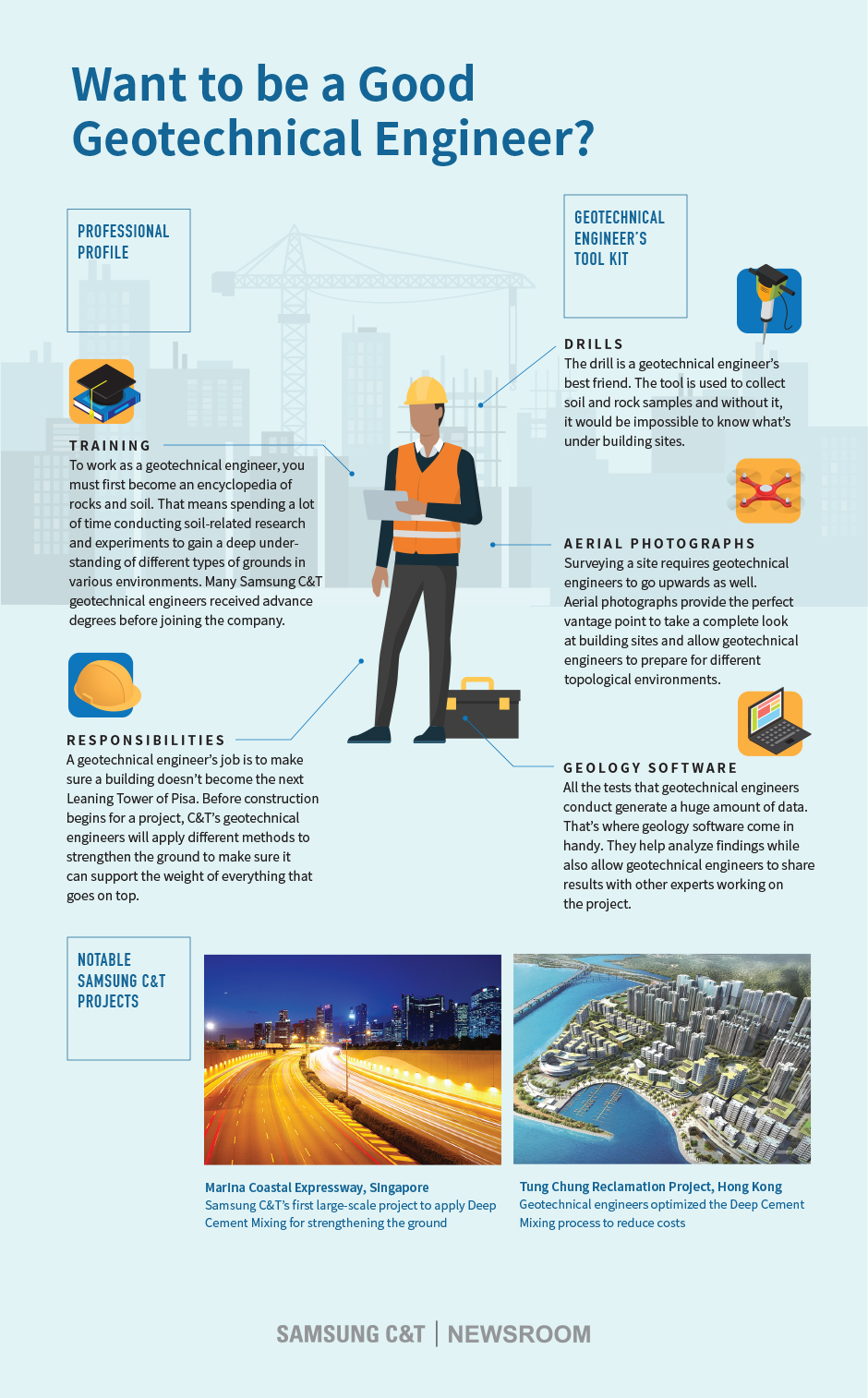The 25-Second Trick For Geotheta
The 25-Second Trick For Geotheta
Blog Article
How Geotheta can Save You Time, Stress, and Money.
Table of ContentsThe 10-Minute Rule for GeothetaThe Facts About Geotheta UncoveredThe 9-Second Trick For GeothetaGetting My Geotheta To WorkThe Definitive Guide for Geotheta

They conduct website examinations, gather examples, perform laboratory examinations, and evaluate data to assess the viability of the ground for building tasks - Geotechnical Engineers. Based upon their findings, geotechnical engineers provide suggestions for foundation layout, incline stability, keeping structures, and mitigation of geotechnical threats. They work together with other experts, such as architects, architectural engineers, and building groups, to ensure that geotechnical factors to consider are integrated into the overall job style and execution
By examining the habits and residential properties of dirt and rock, they can identify prospective geotechnical dangers such as landslides, soil settlement, or incline instability. Their experience aids stop failures or accidents that might threaten lives and home. Right here are some comprehensive responsibilities and duties of a geotechnical engineer: Website Examination: Geotechnical designers conduct site examinations to gather information on subsurface problems.
They interpret the information to recognize the homes and behavior of the soil and rock, including their stamina, permeability, compaction characteristics, and groundwater conditions. Geotechnical Evaluation and Layout: Geotechnical designers assess the information accumulated throughout site examinations to assess the security and suitability of the site for construction jobs. They do geotechnical calculations and modeling to review elements such as birthing capability, settlement, incline stability, side earth stress, and groundwater circulation.
Excitement About Geotheta
Structure Design: Geotechnical engineers play an important duty in making foundations that can safely support the intended framework. They assess the soil problems and lots needs to identify the suitable foundation kind, such as shallow structures (e.g., grounds), deep structures (e.g (https://www.twitch.tv/geotheta/about)., heaps), or specialized methods like dirt improvement. They think about aspects such as settlement limitations, birthing capability, and soil-structure interaction to develop ideal structure designs
They review building strategies, monitor website activities, and perform field examinations to verify that the style suggestions are followed. If unpredicted geotechnical concerns occur, they assess the situation and supply referrals for removal or modifications to the design. Threat Analysis and Mitigation: Geotechnical designers analyze geotechnical risks and risks connected with the project website, such as landslides, liquefaction, or soil erosion.

Partnership and Communication: Geotechnical designers function very closely with other specialists associated with a task, such as architects, architectural engineers, and construction teams. Reliable communication and collaboration are important to incorporate geotechnical considerations into the total job layout and building and construction procedure. Geotechnical designers give technological experience, response queries, and make certain that geotechnical needs are fulfilled.
The Main Principles Of Geotheta
Right here are some sorts of geotechnical engineers: Structure Designer: Foundation designers concentrate on making and evaluating structures for structures. They evaluate the dirt problems, load needs, and site qualities to identify one of the most ideal structure type and layout, such as shallow foundations, deep foundations, or specialized strategies like stack foundations.
They evaluate the factors influencing slope stability, such as soil homes, groundwater problems, and slope geometry, and create strategies to stop incline failings over at this website and reduce risks. Earthquake Designer: Earthquake engineers focus on evaluating and designing structures to withstand seismic pressures. They evaluate the seismic threat of a site, assess dirt liquefaction possibility, and develop seismic design standards to make certain the safety and security and strength of structures during earthquakes.
They carry out area screening, collect samples, and evaluate the gathered data to define the dirt homes, geologic formations, and groundwater problems at a site. Geotechnical Instrumentation Designer: Geotechnical instrumentation engineers concentrate on surveillance and gauging the habits of dirt, rock, and structures. They mount and preserve instrumentation systems that keep track of elements such as soil settlement, groundwater levels, slope motions, and architectural displacements to analyze efficiency and offer very early cautions of prospective problems.
Geotheta Can Be Fun For Everyone
They perform tests such as triaxial tests, consolidation examinations, straight shear tests, and permeability examinations to collect information for geotechnical evaluation and style. Geosynthetics Engineer: Geosynthetics engineers focus on the style and application of geosynthetic materials, such as geotextiles, geogrids, and geomembranes. They use these products to enhance dirt security, strengthen slopes, provide drainage solutions, and control erosion.
They have a tendency to be investigative people, which means they're intellectual, reflective, and curious. They are interested, systematic, reasonable, logical, and sensible. Some of them are also social, meaning they're kind, generous, participating, person, caring, practical, empathetic, tactful, and friendly. Does this noise like you? Take our totally free occupation test to figure out if geotechnical designer is one of your leading job matches.
In the workplace setting, geotechnical engineers utilize specialized software program tools to perform calculations, produce styles, and examine data. They prepare reports, testimonial project requirements, interact with customers and team members, and coordinate project activities. The office setting gives a helpful environment for study, analysis, and cooperation with various other specialists entailed in the job.
The Only Guide to Geotheta
They often go to task sites to perform site examinations, examine geotechnical conditions, and gather information for evaluation. These gos to involve taking a trip to various locations, sometimes in remote or challenging surfaces. Geotechnical engineers might carry out dirt sampling, conduct examinations, and monitor building and construction tasks to ensure that the geotechnical facets of the job are being applied properly.
Geotechnical designers likewise function in specialized geotechnical laboratories. Geotechnical laboratory designers function extensively in these settings, managing testing equipment, operating instruments, and videotaping data.
Report this page